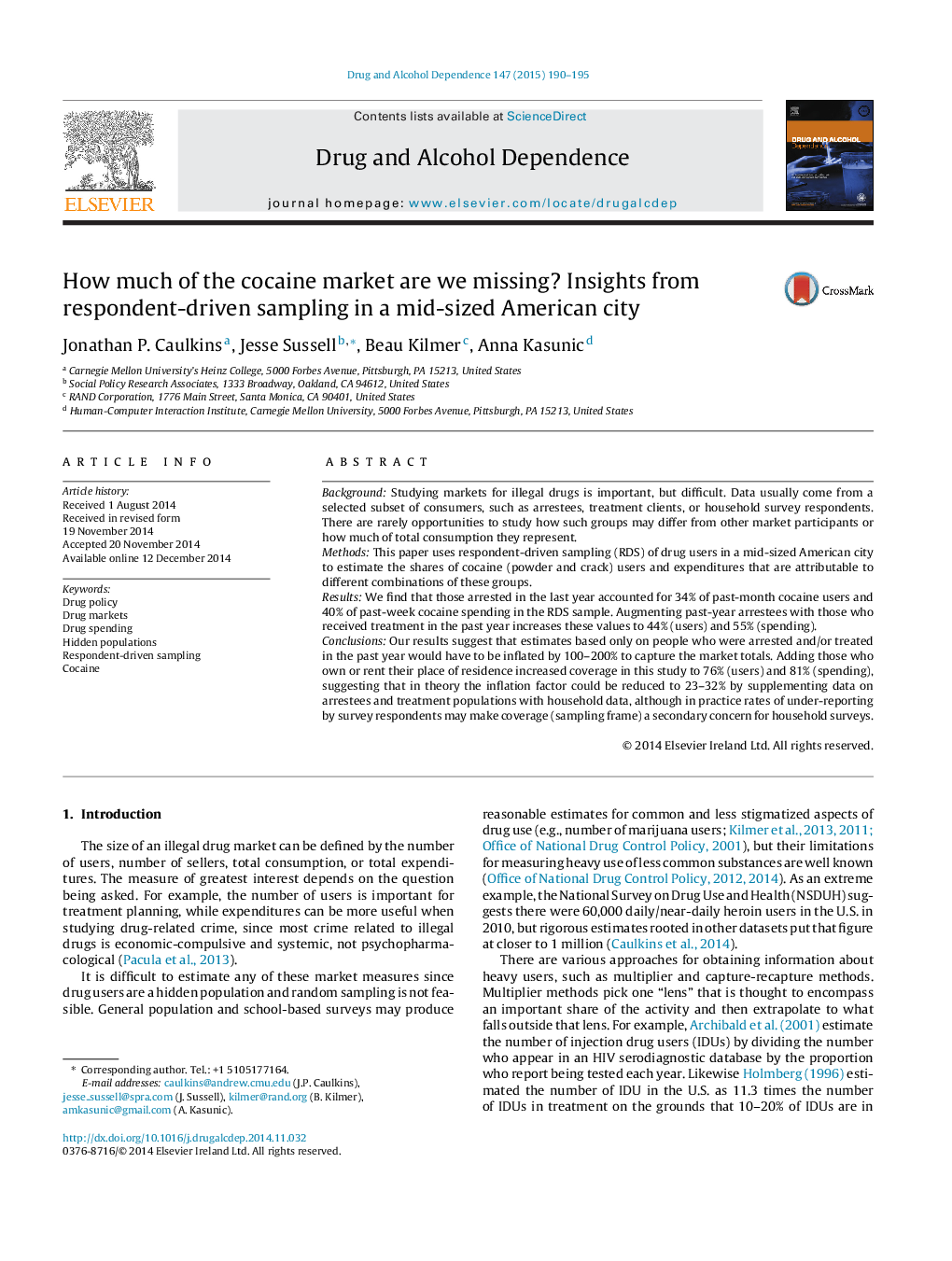| کد مقاله | کد نشریه | سال انتشار | مقاله انگلیسی | نسخه تمام متن |
|---|---|---|---|---|
| 1069889 | 1486144 | 2015 | 6 صفحه PDF | دانلود رایگان |
• We used respondent-driven sampling (RDS) to understand cocaine markets.
• A small number of heavy users accounted for a disproportionate share of spending.
• Past-year arrestees accounted for one-third of use, consistent with national estimate.
• Total market was double that spent by those arrested and/or treated in past year.
• Respondent-driven sampling is a feasible approach for gaining drug market insights.
BackgroundStudying markets for illegal drugs is important, but difficult. Data usually come from a selected subset of consumers, such as arrestees, treatment clients, or household survey respondents. There are rarely opportunities to study how such groups may differ from other market participants or how much of total consumption they represent.MethodsThis paper uses respondent-driven sampling (RDS) of drug users in a mid-sized American city to estimate the shares of cocaine (powder and crack) users and expenditures that are attributable to different combinations of these groups.ResultsWe find that those arrested in the last year accounted for 34% of past-month cocaine users and 40% of past-week cocaine spending in the RDS sample. Augmenting past-year arrestees with those who received treatment in the past year increases these values to 44% (users) and 55% (spending).ConclusionsOur results suggest that estimates based only on people who were arrested and/or treated in the past year would have to be inflated by 100–200% to capture the market totals. Adding those who own or rent their place of residence increased coverage in this study to 76% (users) and 81% (spending), suggesting that in theory the inflation factor could be reduced to 23–32% by supplementing data on arrestees and treatment populations with household data, although in practice rates of under-reporting by survey respondents may make coverage (sampling frame) a secondary concern for household surveys.
Journal: Drug and Alcohol Dependence - Volume 147, 1 February 2015, Pages 190–195
